#an American evolution
Explore tagged Tumblr posts
Text

Chrysler Corp, 1985
93 notes
·
View notes
Text
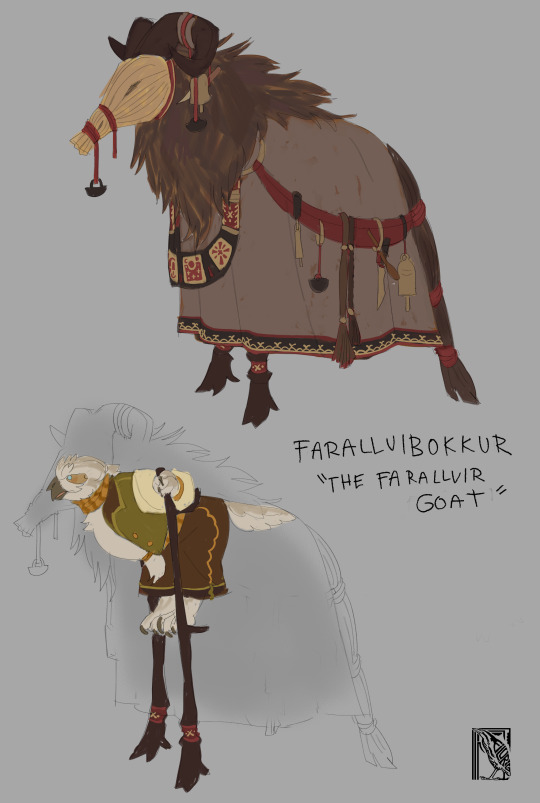
goat costume for one of the haeggir holidays which occurs during winter solstice - "farallvir", which ends up being adopted by humans into their own christmas tradition!
#worldbuilding#speculative biology#speculative evolution#spec bio#spec evo#fantasy#tomte#pareidolia tag#bestiary#lots of cultural interchange between the haeggir and humans in pareidolia#(yes this is based on the christmas goat tradition here LOL in pareidolia it was the tomtar that started it!!)#or well the christmas goat used to be more than the hay one way back it used to be a thing u dressed up as#we should bring that shit back btw fuck the american santa claus let us have julbocken back
414 notes
·
View notes
Text
The longest genome of all the animals on Earth belongs not to a giant, or a cognitively advanced critter, but a writhing, water-dwelling creature seemingly frozen in time, right at the cusp of evolving into a beast that can live on land. These are the lungfish, a class of freshwater vertebrates whose peculiar characteristics are reflected in a colossal genetic code. Able to breathe both air and water, with limb-like fins, and a well-developed skeletal architecture, these strange ancient creatures are thought to is thought to share a common ancestor with all four-limbed vertebrates known as tetrapods.
Continue Reading.
298 notes
·
View notes
Text
In eastern Mexico’s underground caverns and streams, a blind fish undergoes a peculiar adolescence: as it approaches maturity, taste buds begin to sprout under its chin and on top of its head, creeping toward its back.
“It’s a pretty wild amplification of the sensory system of taste,” says Josh Gross, an evolutionary geneticist at the University of Cincinnati and a co-author of a recent study on the cave fish in Nature Communications Biology. Gross and his team discovered that the new buds blossom around the time when the fish transition from eating larval crustaceans to gobbling up their adulthood staple: bat guano. Taste buds outside their mouths might be helping the fish detect bat droppings in the utterly dark, “food-starved” caves, Gross says.
Wandering taste buds aren’t unheard of elsewhere, especially in other fish. Some damselfish cultivate taste buds on their fins, and channel catfish have them across their midsections. And as alien as it may seem, many cells throughout the human body can taste, too. They’re just not sharing the flavors with your brain like taste buds do.
Lora Bankova is a Harvard Medical School respiratory biologist who studies tuft cells, a cell type sprinkled within human mucous tissues like those lining your nostrils, throat and gut. These “rapid responder” cells trigger the immune system if they detect an outside threat, and many of them rely on built-in taste receptors (the same kinds found on taste-bud cells) to do so. Bankova notes that many potentially harmful bacteria communicate via signaling chemicals called lactones—which also happen to activate taste receptors attuned to bitter flavors, prompting tuft cells’ immune response. And it turns out that even environmental allergies may be a matter of taste: dust mites and several mold species can also set off a tuft cell’s taste receptors, Bankova says.
“Evolutionarily, taste receptors [have moved around] the body to protect us from the air we inhale and all the attacks we’re getting through the orifices,” Bankova says. “They’re in the inner ear, the urethra, everywhere something can get into your body.”
Such “extra” taste receptors aren’t just bouncers at the door—they taste test for our internal systems, too. Receptors for sweet tastes help to tune insulin production in the pancreas and make sure neurons in the brain have access to enough glucose. Sweet, bitter and umami receptors in the gut modulate digestion.
Gross says it’s still a mystery what taste receptors the bat guano activates in the blind cave fish. “There may be some sugar content if it’s a fruit bat, maybe some protein content if it’s a carnivorous bat,” he says. So far only the cave fish has signed up to sample it.
78 notes
·
View notes
Text
Todd: "Homeboy don' even have to work! Homeboy get dat paper all on his own!"
Kurt: *slaps Todd in the face* "Stop that. You're white."
Todd: *rubbing his cheek* "...I'm homeboy..."
#source: american dad#xmen evolution#x men evolution#todd tolansky#kurt wagner#nightcrawler#toad#x men#we all know toad would say that
72 notes
·
View notes
Text

#tv shows#tv series#polls#x men evolution#scott mcneil#meghan black#kirby morrow#2000s series#us american series#have you seen this series poll
67 notes
·
View notes
Note
Nonbinary people 🤝 polyamorous people
being acceptable targets from "allies"
FOR REALLL
the acceptable target thing has been happening since time immemorial & the only thing that shifts is the particular group being targeted in the mainstream. for the past several years it's been people who are queer in ways that are too threatening to a binary nuclear family default. with the rapid rise of transphobia it's now starting to morph into specifically trans women who don't pass and trans men with brightly colored hair. in 2010 it was gay men who are too limp-wristed n cis dykes with too-short hair. in the 2000s it was metrosexuals who are gay straights because they use nice shampoo.
racism and xenophobia also go thru evolutions of acceptable targets in the mainstream but the people actually affected know more about the timeline.
it's gonna keep happening forever and it's just. soooo.
Simply Be Nice About People Who Irritate You. Thanks....
#*these timelines are based largely on my experience of american-centric internet spheres.#there are other acceptable targets and different evolution of this concept in different places and cultures etc.#bear with me for not being able to cover an entire global history in one annoyed personal post.#(not u meltedmercury just. anyone else with an itch to strawman)#replies
35 notes
·
View notes
Text

Neolicaphrium recens here might look like some sort of early horse, but this little mammal was actually something else entirely.
Known from southern South America during the late Pleistocene to early Holocene, between about 1 million and 11,000 years ago, Neolicaphrium was the last known member of the proterotheriids, a group of South American native ungulates that were only very distantly related to horses, tapirs, and rhinos. Instead these animals evolved their remarkably horse-like body plan completely independently, adapting for high-speed running with a single weight-bearing hoof on each foot.
Neolicaphrium was a mid-sized proterotheriid, standing around 45cm tall at the shoulder (~1'6"), and unlike some of its more specialized relatives it still had two small vestigial toes on each foot along with its main hoof. Tooth microwear studies suggest it had a browsing diet, mainly feeding on soft leaves, stems, and buds in its savannah woodland habitat.
It was one of the few South American native ungulates to survive through the Great American Biotic Interchange, when the formation of the Isthmus of Panama allowed North and South American animals to disperse into each other's native ranges. While many of its relatives had already gone extinct in the wake of the massive ecological changes this caused, Neolicaphrium seems to have been enough of a generalist to hold on, living alongside a fairly modern-looking selection of northern immigrant mammals such as deer, peccaries, tapirs, foxes, jaguars… and also actual horses.
Some of the earliest human inhabitants of South America would have seen Neolicaphirum alive before its extinction. We don't know whether they had any direct impact on its disappearance – but since the horses it lived alongside were hunted by humans and also went extinct, it's possible that a combination of shifting climate and hunting pressure pushed the last of the little not-horses over the edge, too.
———
NixIllustration.com | Tumblr | Twitter | Patreon
#science illustration#paleontology#paleoart#palaeoblr#neolicaphrium#proterotheriidae#litopterna#meridiungulata#south american native ungulates#panperissodactyla#ungulate#mammal#art#convergent evolution#not-horse#a phony pony#quaternary extinction
483 notes
·
View notes
Text
Baggage
"Should we start loving? Give this a try?


You got baggage but so do I,
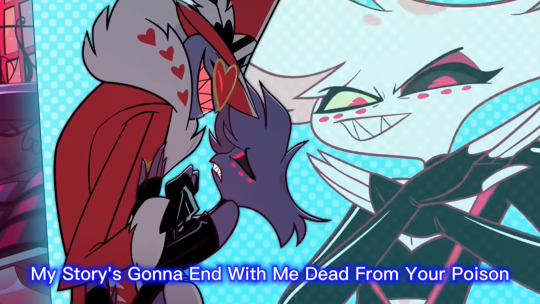



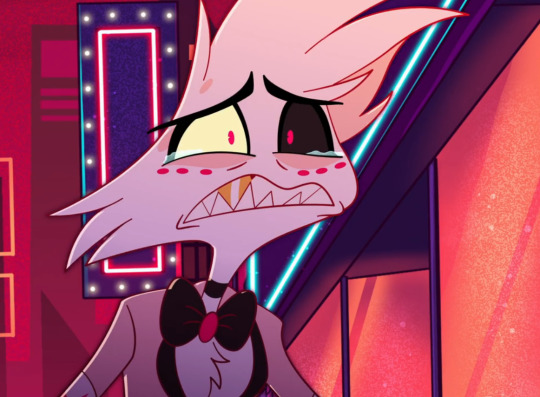
you got baggage but so do I.....
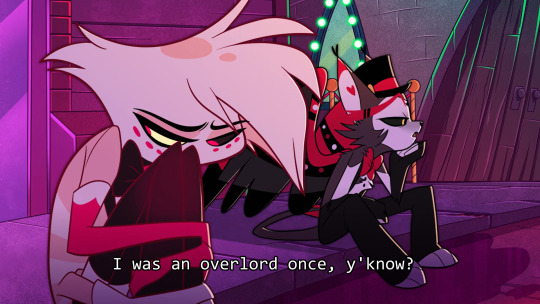

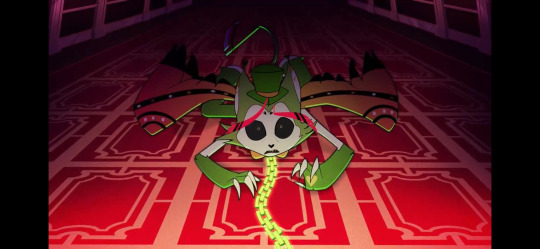

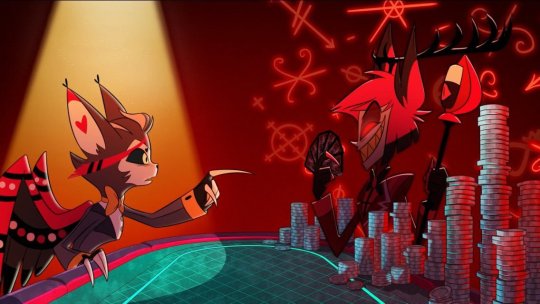
let's give this a try..."

#fizziepop thoughts#vivziepop#baggage lyrics#rare americans#hazbin lyrical#hazbin hotel#guys its them#huskerdust#angel dust hazbin hotel#husk hazbin hotel#husk is my favorite#angel dust is also my favorite#this song gives off loser baby vibes and i love it#i love how the evolution for both of the#husk deserves better#angel dust deserves better#they deserve each other
110 notes
·
View notes
Text

House is a music genre characterized by a repetitive four-on-the-floor beat and a typical tempo of 120 beats per minute as a re-emergence of 1970's disco. It was created by DJs and music producers from Chicago's underground club culture and evolved slowly in the early/mid 1980s, and as DJs began altering disco songs to give them a more mechanical beat. By early 1988, House became mainstream and supplanted the typical 80s music beat

House was created and pioneered by DJs and producers in Chicago such as Frankie Knuckles, Ron Hardy, Jesse Saunders, Chip E., Joe Smooth, Steve "Silk" Hurley, Farley "Jackmaster" Funk, Marshall Jefferson, Phuture, and others. House music initially expanded internationally, to London, then to other American cities, such as New York City, and ultimately a worldwide phenomenon.

In its most typical form, the genre is characterized by repetitive 4/4rhythms including bass drums, off-beat hi-hats, snare drums, claps, and/or snaps at a tempo of between 120 and 130 beats per minute (bpm); synthesizerriffs; deep basslines; and often, but not necessarily, sung, spoken or sampled vocals. In house, the bass drum is usually sounded on beats one, two, three, and four, and the snare drum, claps, or other higher-pitched percussion on beats two and four. The drum beats in house music are almost always provided by an electronic drum machine, often a Roland TR-808, TR-909, or a TR-707. Claps, shakers, snare drum, or hi-hat sounds are used to add syncopation. One of the signature rhythm riffs, especially in early Chicago house, is built on the clave pattern. Congas and bongos may be added for an African sound, or metallic percussion for a Latin feel


One book from 2009 states the name "house music" originated from a Chicago club called the Warehouse that was open from 1977 to 1982. Clubbers to the Warehouse were primarily African, gay men, who came to dance to music played by the club's resident DJ, Frankie Knuckles, who fans refer to as the "godfather of house". Frankie began the trend of splicing together different records when he found that the records he had were not long enough to satisfy his audience of dancers. After the Warehouse closed in 1983, eventually the crowds went to Knuckles' new club, The Power House, later to be called The Power Plant, and the club was renamed, yet again, into Music Box with Ron Hardy as the resident DJ. The 1986 documentary, "House Music in Chicago", by filmmaker, Phil Ranstrom, captured opening night at The Power House, and stands as the only film or video to capture a young Frankie Knuckles in this early era, right after his departure from The Warehouse.
In the Channel 4 documentary Pump Up the Volume, Knuckles remarks that the first time he heard the term "house music" was upon seeing "we play house music" on a sign in the window of a bar on Chicago's South Side. One of the people in the car joked, "you know that's the kind of music you play down at the Warehouse!" In self-published statements, South-Side Chicago DJ Leonard "Remix" Rroy claimed he put such a sign in a tavern window because it was where he played music that one might find in one's home; in his case, it referred to his mother's soul and disco records, which he worked into his sets

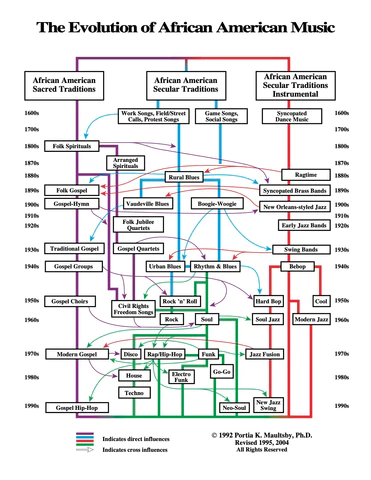

#house music#african music#chicago#african#afrakan#kemetic dreams#brownskin#africans#brown skin#afrakans#african culture#frankie knuckles#Farley “Jackmaster” Funk#dance#evolution of african american music
101 notes
·
View notes
Text


Cillian Murphy @ AFI Awards Luncheon 2024
#loving the evolution of his style from the golden globes to this#cillian murphy#afi awards#american film institute#oppenheimer
74 notes
·
View notes
Text
do you too sometimes think about all the undiscovered little stupid kids shows from the 90-00s and think about how. they could also be loved. and there is someone out there. who loves it so much more than i could ever imagine
#i will literally tag all of the ones i mean#all the ones i KNOW of#please share more silly kids shows#ESPECIALLY it they're spooky#roswell conspiracies: aliens myths and legends#gargoyles#men in black the series#beetlejuice cartoon#alienators: evolution continues#caspers scare school#one that im really nostalgic for but unfortunately its a SNOOZEFEST#dinosquad#it does have dinosaurs a bit#another nostalgic one#the life and times of juniper lee#american dragon jake long#and so SO much more#💗💗💗#LOVE!!!!go CRAZY!!!!!#ENJOY THINGS VERY DEEPLY#!!!!!!#spooky&silly#extreme ghostbusters
36 notes
·
View notes
Text
So something that a lot of people are seemingly unaware off is the "rostral boss" or simply face bump seen in some American Crocodiles (Crocodylus acutus). I've seen it a few times now that folks are really surprised to see it, so I think its worth sharing a bit on that and its importance to understanding how crocs came to America.
For starters, the rostral boss is a large bump that is located on the snout of some crocodiles just before the eyes, covering the back of the nasal bone and areas of the prefrontals, lacrimals and parts of the frontal bone. This boss, among modern crocs, is most prominent in the American Crocodile. Sidenote, I know its a pain, but here American Crocodile (capitalized C) means Crocodylus acutus. When meaning the crocodiles of America, I'll use Neotropic crocodiles. Also tho I'm usually liberal with the term, here crocodile specifically refers to the genus Crocodylus. Good? Good. Anyhow, this kinda gives them a look thats been likened to the Triassic phytosaurs and makes individuals with said bump really distinct. Below are some pictures which show different indivudals with less and more pronounced bosses.
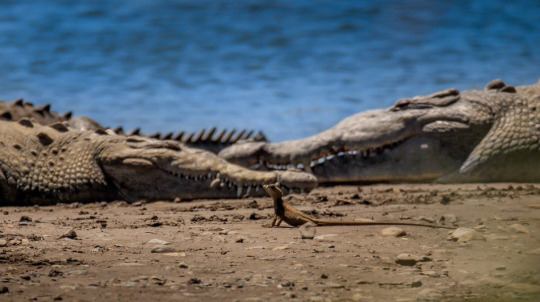




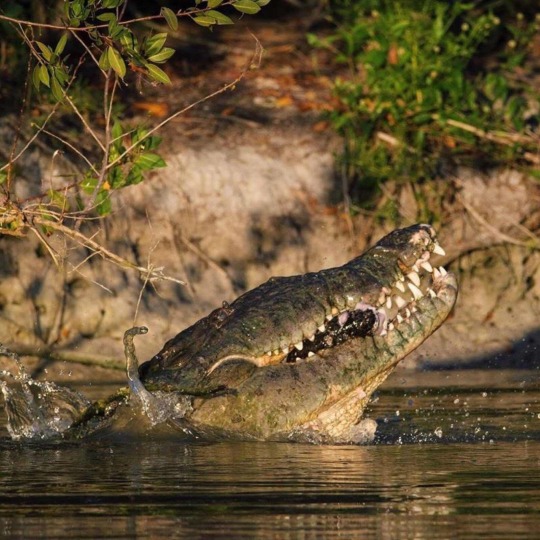
Now this feature is not unique to American Crocodiles (again meaning C. acutus, I know the terminology is confusing), but can be seen in at least some other neotropic Crocodylus species. Now I've yet to see images of either Morelet's or Orinoco Crocodiles with the same and they don't appear to have been recognized with them by older literature, but there are some Cuban Crocodile skulls also showing a slight boss. If you look at the two photos below, you can see an American Crocodile skull on the left and several skulls of Cuban Crocodiles on the right (from the Quaternary Sawmill Sink on the Bahamas). It's comparably subtle in the Cubans, but there is a boss present in these skulls.
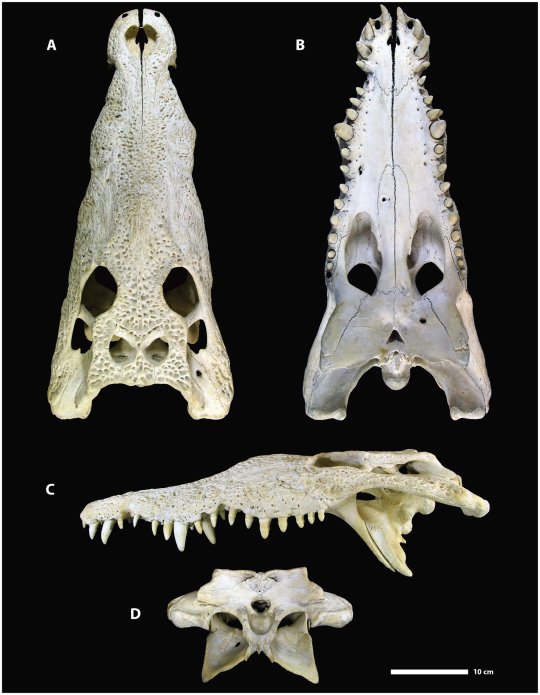

The fun part is that this isn't just a random trait that these crocodiles got out of nowhere. No, the rostral boss is actually a trait thats likely to be ancestral to ALL Crocodylus species of the Neotropics (so again, Morelet's, Cubans, Orinocos and Americans). The oldest known Crocodylus species from the Americas is Crocodylus falconensis from the Pliocene of Venezuela. And guess what, it had that very same bump on its face.


But that's not where the trail ends. No. Back in the 1940s a crocodile was found in Miocene sediments of Northern Africa that had a similar bump. Meaning on the other side of the Atlantic. This was largely ignored at the time, despite the similarities to American and Cuban Crocodiles and their rostral bosses being known back then. But more recently, scientists have taken a second look at this species, Crocodylus checchiai, and concluded that it is a likely ancestor to today's Neotropic crocodiles.
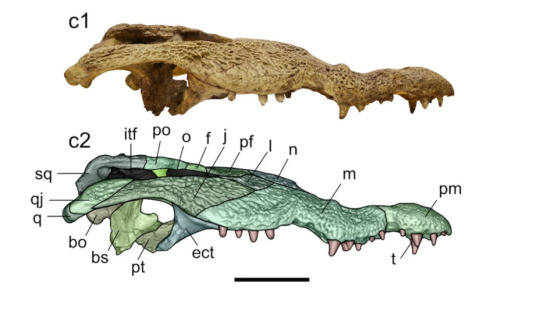
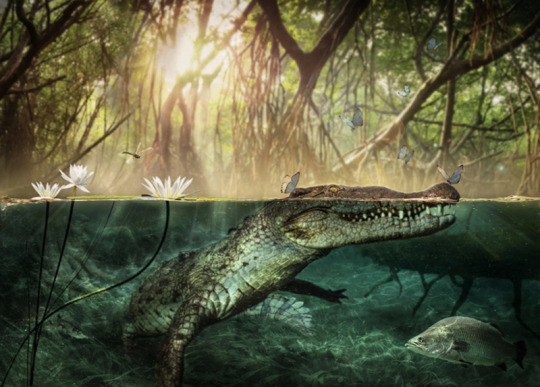
We already knew that African crocodiles (Nile Crocodiles and Sacred Crocodiles) were more closely related to Neotropic crocodiles than to Australasian ones (like Salties, Freshies and Muggers), but this essentially provided some really solid evidence for how crocs got to America. Sometime between the Miocene and Pliocene, Crocodylus checchiai (or a relative or descendent) swam across the Atlantic and landed in the area around the Caribbean, spreading and giving rise to the four true crocodiles that still inhabit the region. Which I personally think is really cool.
#crocodile#crocodiles#american crocodile#evolution#cuban crocodile#morelets crocodile#orinoco crocodile#crocodylus falconensis#crocodylus checchiai#reptiles#crocs#palaeblr
271 notes
·
View notes
Text
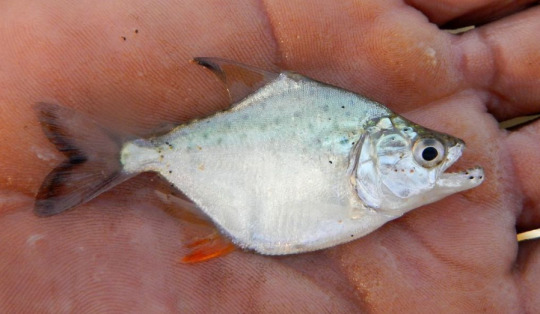
Wimple Piranha (Catoprion mento)
Family: Serrasalmid Family (Serrasalmidae)
IUCN Conservation Status: Least Concern
A tiny (15cm/5.9 inches in length) relative of the more famous Red-Bellied Piranha, the Wimple Piranha is found in the Amazon, Orinoco, Paraguay and Essequibo river basins, and is notable for its unusual diet; adults of this species feed almost exclusively on fish scales, feeding by ramming into larger fish at high speeds with their mouths wide open, biting and generating suction to dislodge their target’s scales and pull them into their mouths. The practice of eating scales, known as lepidophagy, is rare in animals as scales are difficult to digest and require considerable amounts of energy to obtain, and it is likely that it developed in response to the intense competition between fish species in the biodiverse rivers to which Wimple Piranhas are native - although their nutrients-poor diet limits their size, feeding exclusively on scales (occasionally supplemented by small insects or small amounts of the meat of their otherwise unharmed targets where possible) allows Wimple Piranhas to find food while largely avoiding competing with larger and less specialised carnivores. Besides their unusual feeding habits little is known about the biology of wild Wimple Piranhas, although through the observation of captive individuals it has been found that unlike many piranha species they are solitary (possibly avoiding living in groups to avoid competing with other members of their species,) and that like other members of their family females of this species lay eggs.
--------------------------------------------------------------------------
Image Source: https://www.inaturalist.org/taxa/342485-Catoprion-mento
#Wimple Piranha#piranha#piranhas#fish#fishes#zoology#biology#icthyology#animal#animals#wildlife#South American wildlife#freshwater fish#bony fishes#bony fish#aquatic wildlife#evolution#ecology
105 notes
·
View notes
Text
Evolution of my Miku drawings 2020-2023
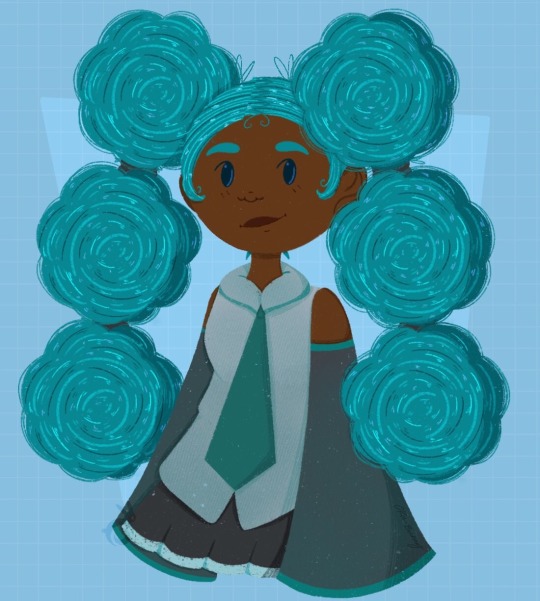
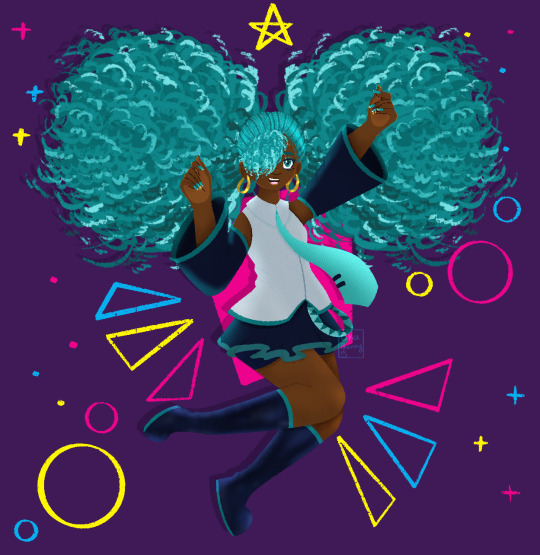

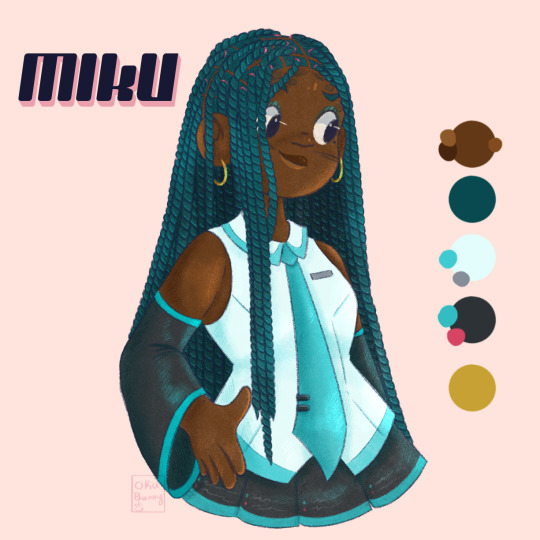
#Miku#black miku#blacktober#miku fan art#vocaloid fanart#vocaloid miku#art evolution#digital art#artwork#art#digital#cute#cute art#procreate#procreate art#drawing while black#black artists#asian american artists#asian artists#trans artists
297 notes
·
View notes
Text

Easily the star attraction of Jurassic Park, I wish she made more appearances in the series!
😎🐟
#history#dilophosaurus#jurassic park#jp#jurassic world#jw#fossils#dinosaurs#navajo#extinct animals#paleontology#prehistoric#isla nublar#isla sorna#jurassic park operation genesis#jpog#jurassic world evolution 2#jwe2#dino#extinct#native americans#prehistoric animals#navajo culture#prehistoric kingdom#jurassic period#nickys facts
30 notes
·
View notes